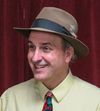A Park is Born
The 75-year journey to turn a Russian Hill reservoir into a San Francisco park.
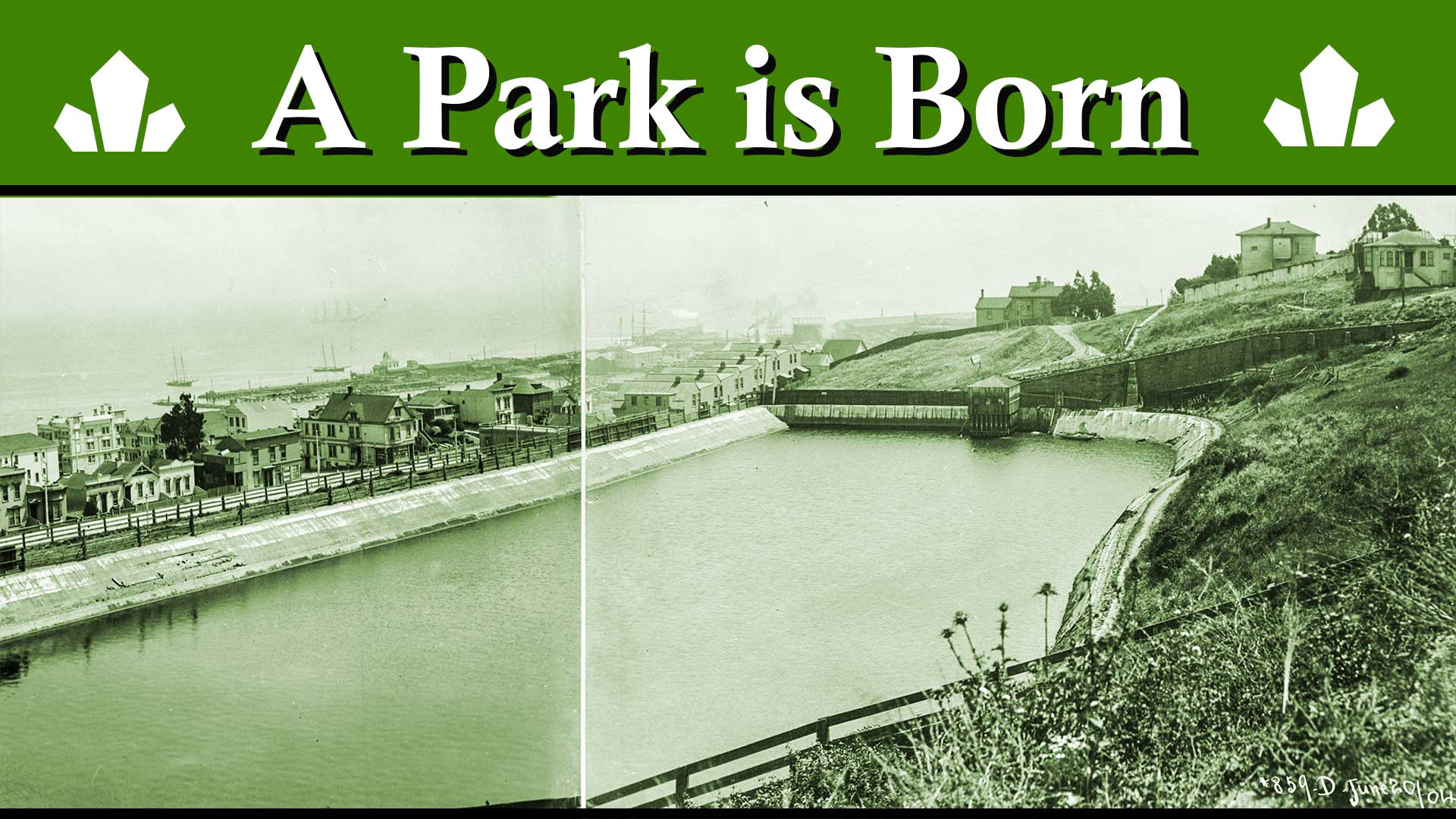
A little more than two years ago, the great new Francisco Park was dedicated between Bay, Chestnut, Hyde and Larkin Streets on the northern edge of Russian Hill.

The site was formerly a roofed reservoir, a blank concrete expanse for those looking down, and a looming berm when viewed from the informal expressway that is Bay Street.
Over the years, hundreds of thousands of tourists would ride a cable car down the Hyde Street hill, stunned by views of the Golden Gate and the bay, perplexed why there appeared to be a weedy helicopter pad in the foreground.
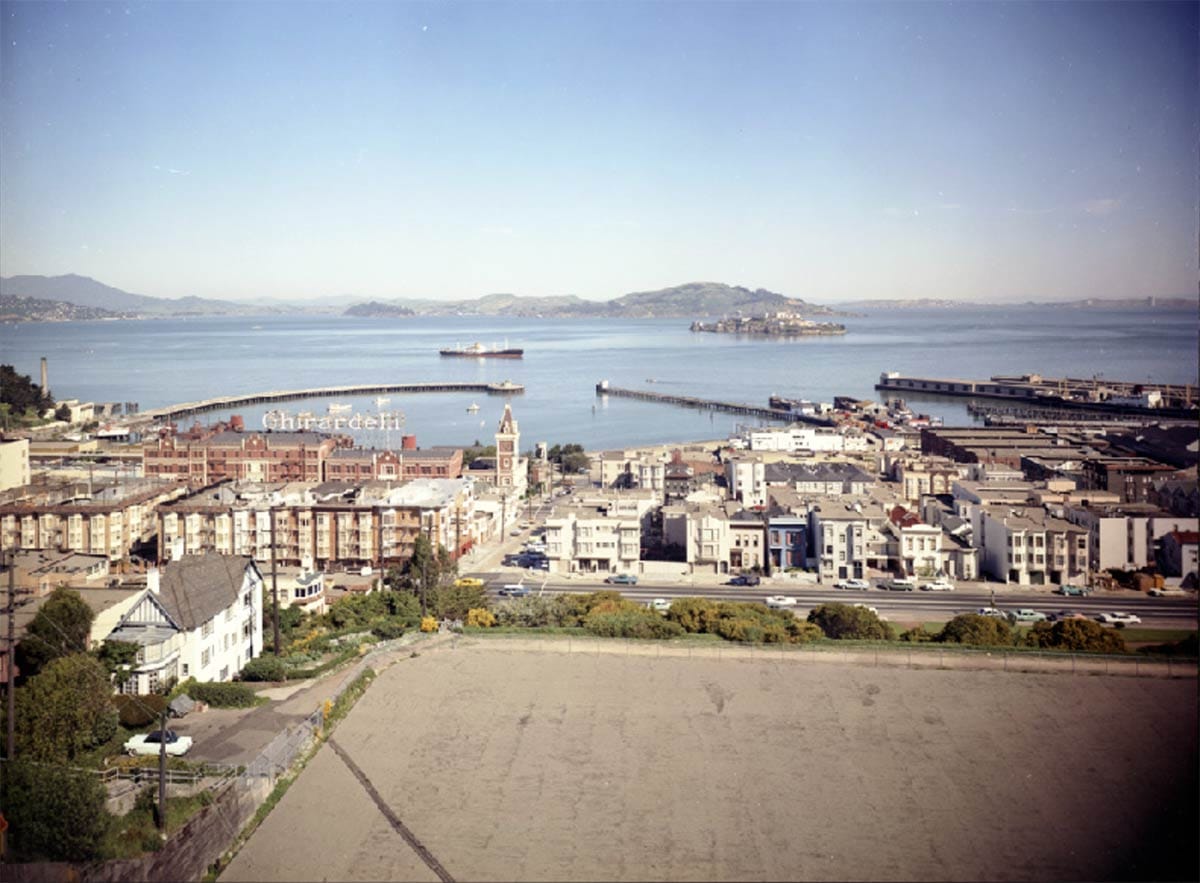
Now they see a grassy oval, playground, and benches they can anticipate resting on after a good walk around Fisherman’s Wharf and Ghirardelli Square.

Under its bland gray roof the reservoir held both emergency water and significant city history.
For many years it was the oldest reservoir in the system with origins dating back to the end of the 1850s. Here is a 1904 open-water view before it was expanded and roofed off:
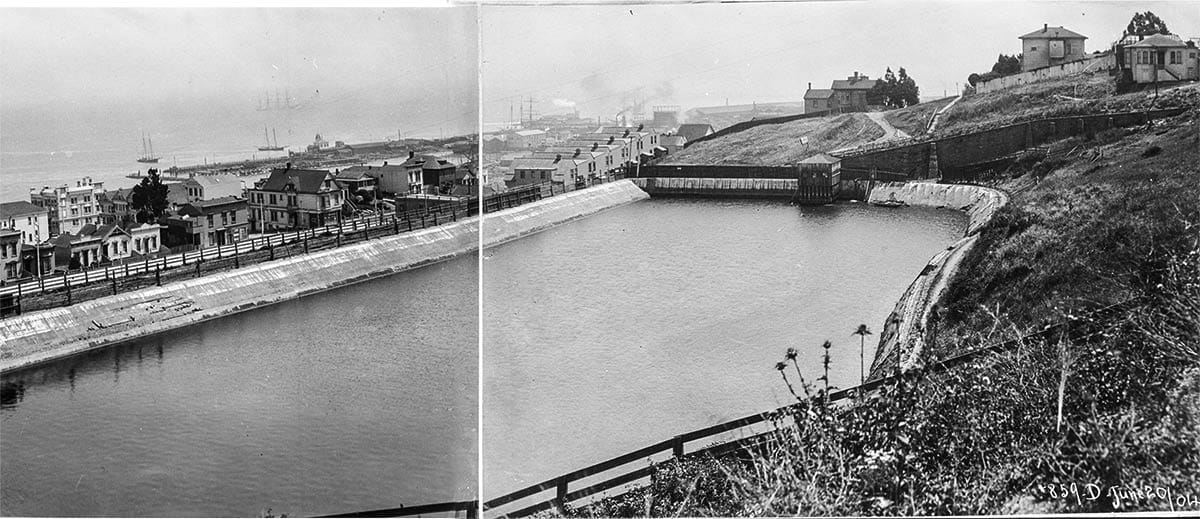
The source of its holdings came all the way from Lobos Creek in the Presidio. Water traveled in a crazy flume system—at points tunneling through hills, but mostly propped up on wooden stilts along rocky cliffs and shore.
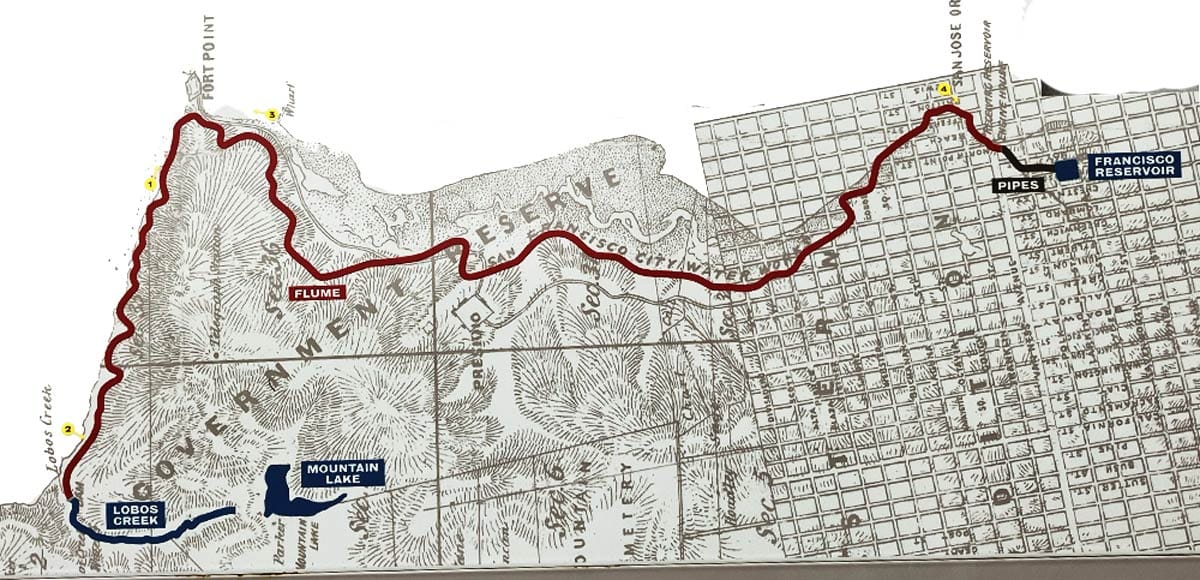
The flume system was even hike-able, although this seems a bit nuts to me:
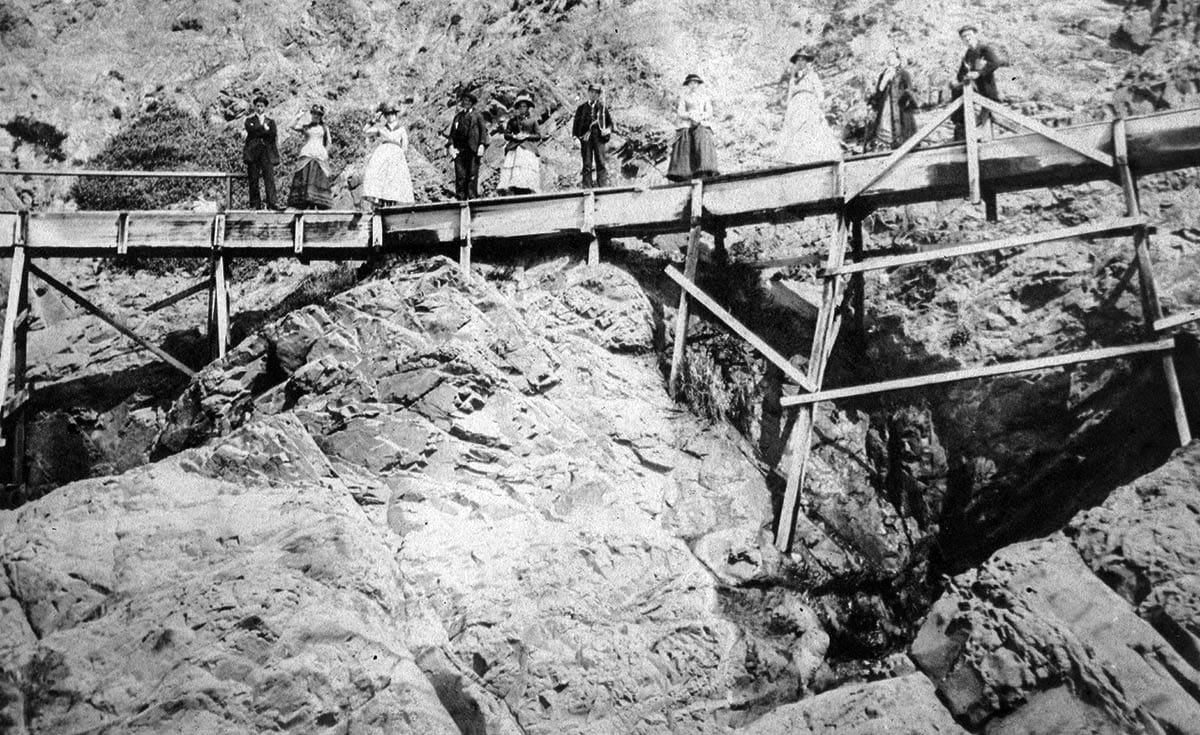
After snaking through the redwood-box system across sandy hills and around the Golden Gate and Fort Mason, the water was pumped up and stored in the brick-lined reservoir to serve the young and growing city around the bend of the hill.
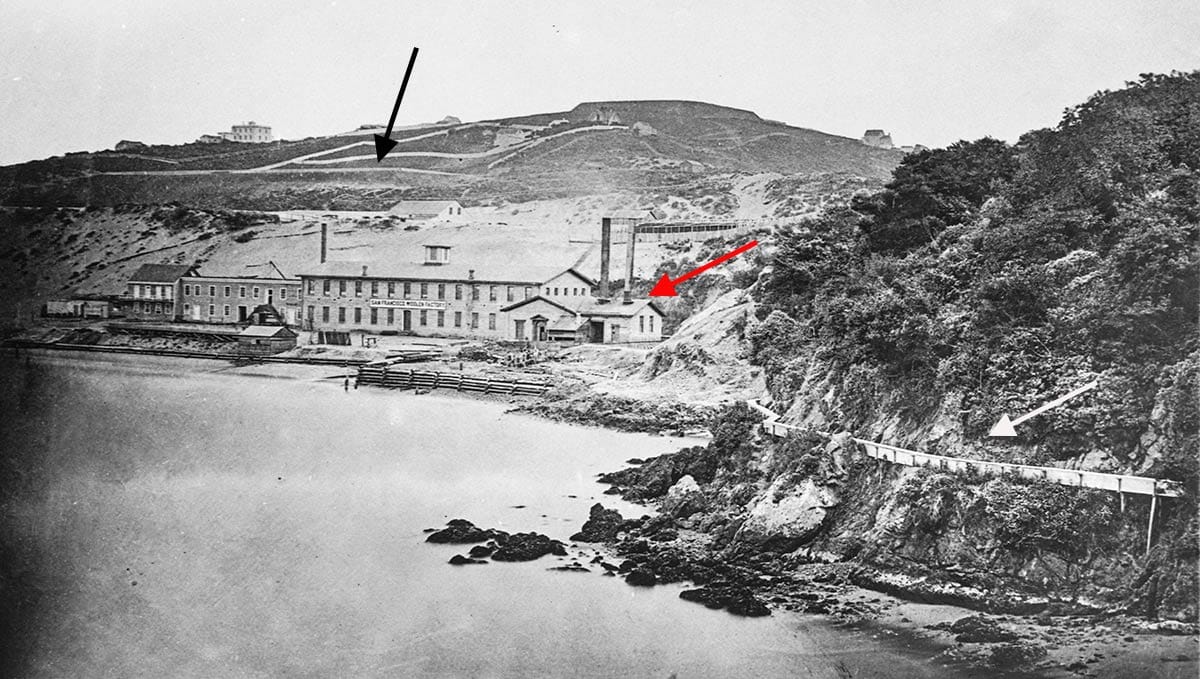
You can learn more about this story in a visit to the new park, which does a very good job of sharing history with interpretive signs and parts of the old reservoir system preserved as educational objects.
There are even imported and reused artifacts, like a section of fence that used to surround the Huntington Mansion on Nob Hill:
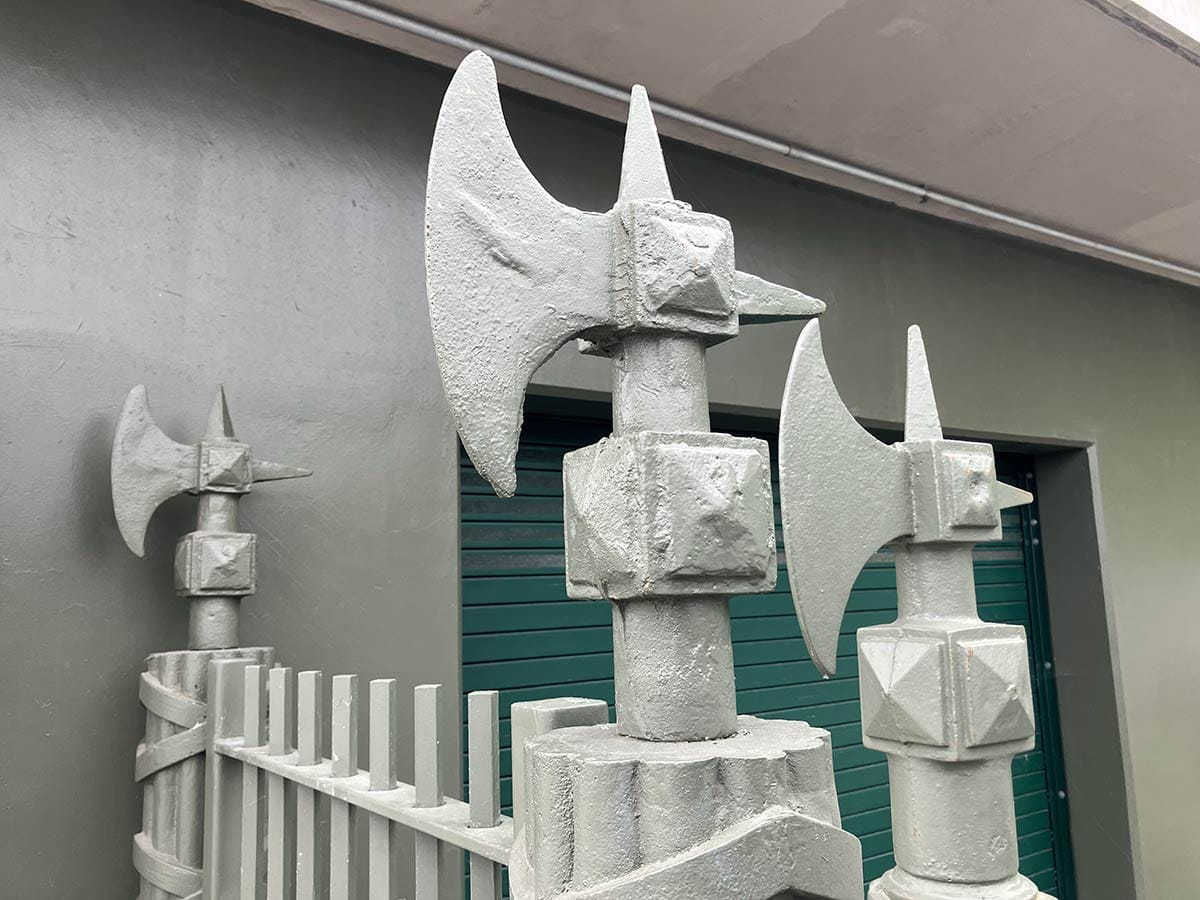
One sign, however, misleads and misses an important story of the site’s past and the park’s creation.
At the viaduct wall on Hyde Street, at the top of the staircase to the park, a panel shows a photo of men and boys with baseball bats. A caption identifies the group “a boy’s baseball team on a sightseeing tour of the City.”
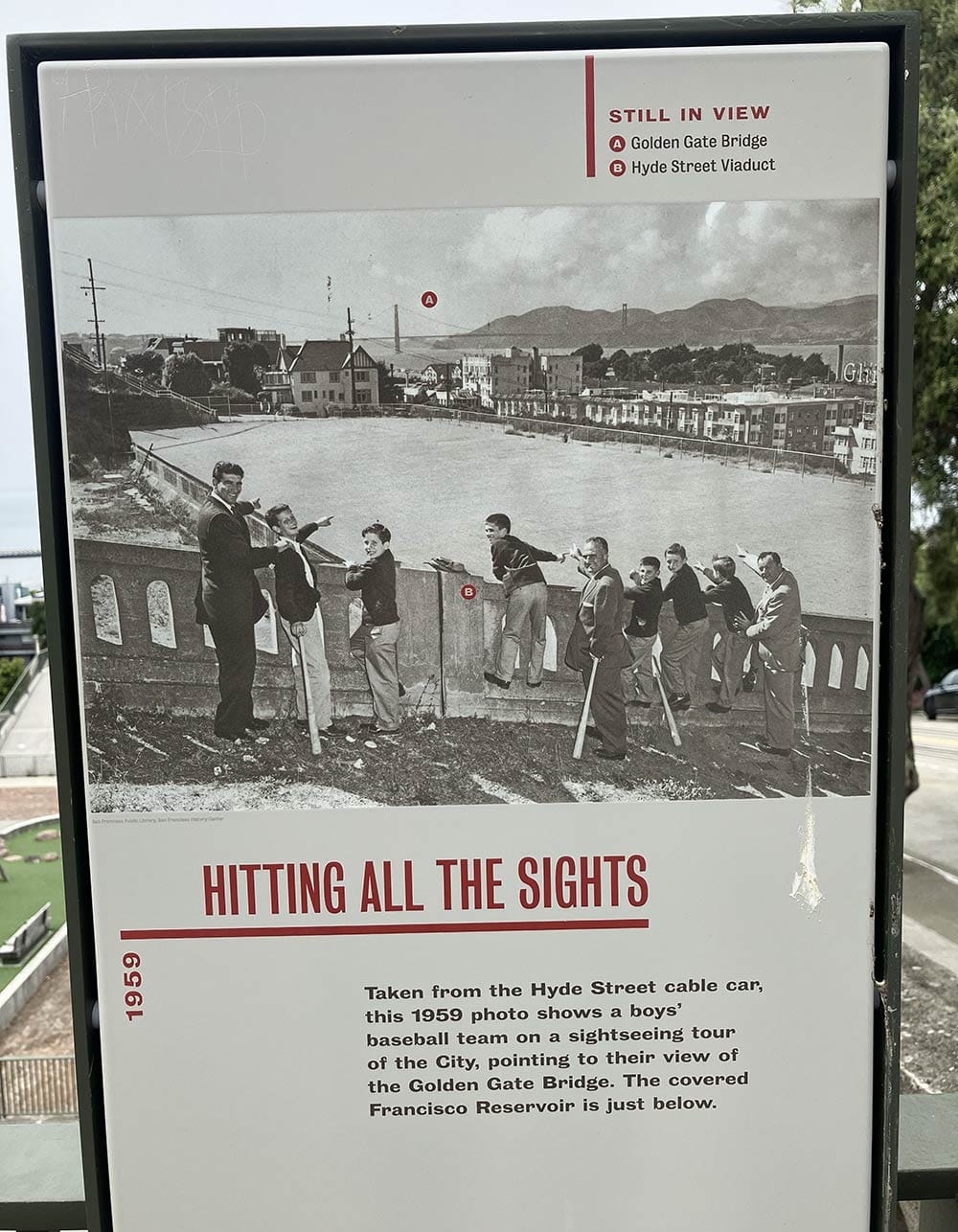
Ummm, no. The cheery shot was actually part of a contentious land use battle between San Francisco residents, city agencies, and elected officials.
In 1958, the 100-year-old Francisco Reservoir was an aged and redundant piece of the city’s water infrastructure and its governing agency, the Public Utilities Commission (PUC), planned to retain only a small section of the site for water storage and sell the rest of the land to Chicago developer Herbert Greenwald for dual 20-story apartment towers.
Russian Hill neighbors were not thrilled with this idea.
Pricey apartment towers had already began popping up around the steep and narrow lots of the hill, providing great views for new buyers, but blocking the same for the folks that already resided on the hill.
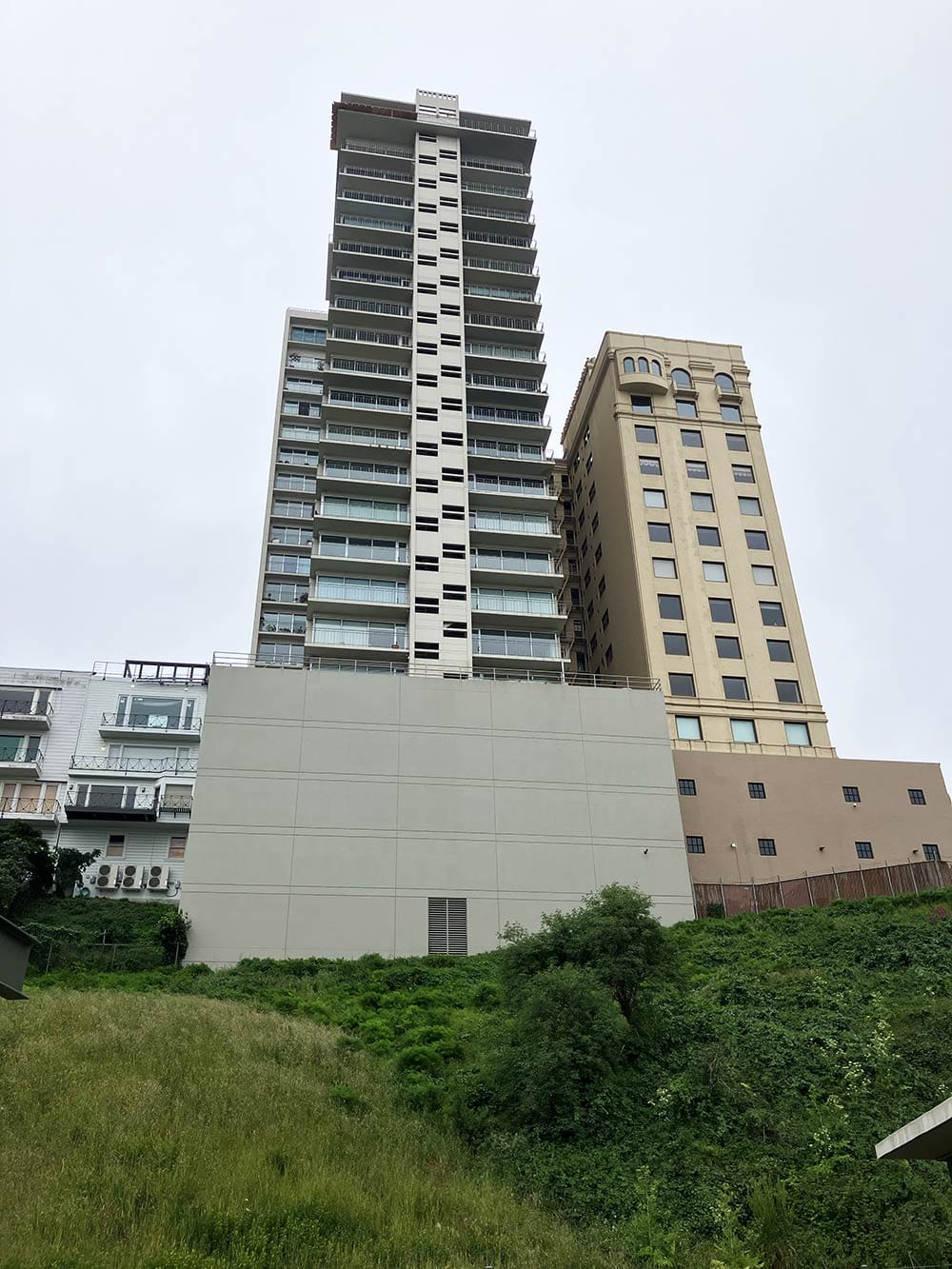
Views aside, broader constituencies didn’t like a prime city-owned parcel sold to a private developer for some cash instead of creating a public amenity from it... like say, a park.
Part of the land above the reservoir was already a park in waiting. When targeted for an apartment house in 1947, the hilly wilderness was privately purchased by the Russian Hill Improvement Association (RHIA) after a grass-roots campaign gathered more than 10,000 signatures supporting park use over development.
The RHIA donated the land to the city for that purpose. In 1958, less than a decade later, the PUC was pitching the idea of two giant towers right in front of the parcel.
So rather than capturing a site-seeing trip, the 1958 photo was a PR shot across the bow in the fight for a park.
The men are former professional athletes, all San Francisco born, posing with neighborhood boys to advocate for a baseball diamond. They are pointing to where they want a ballfield instead of Greenwald’s ritzy towers.
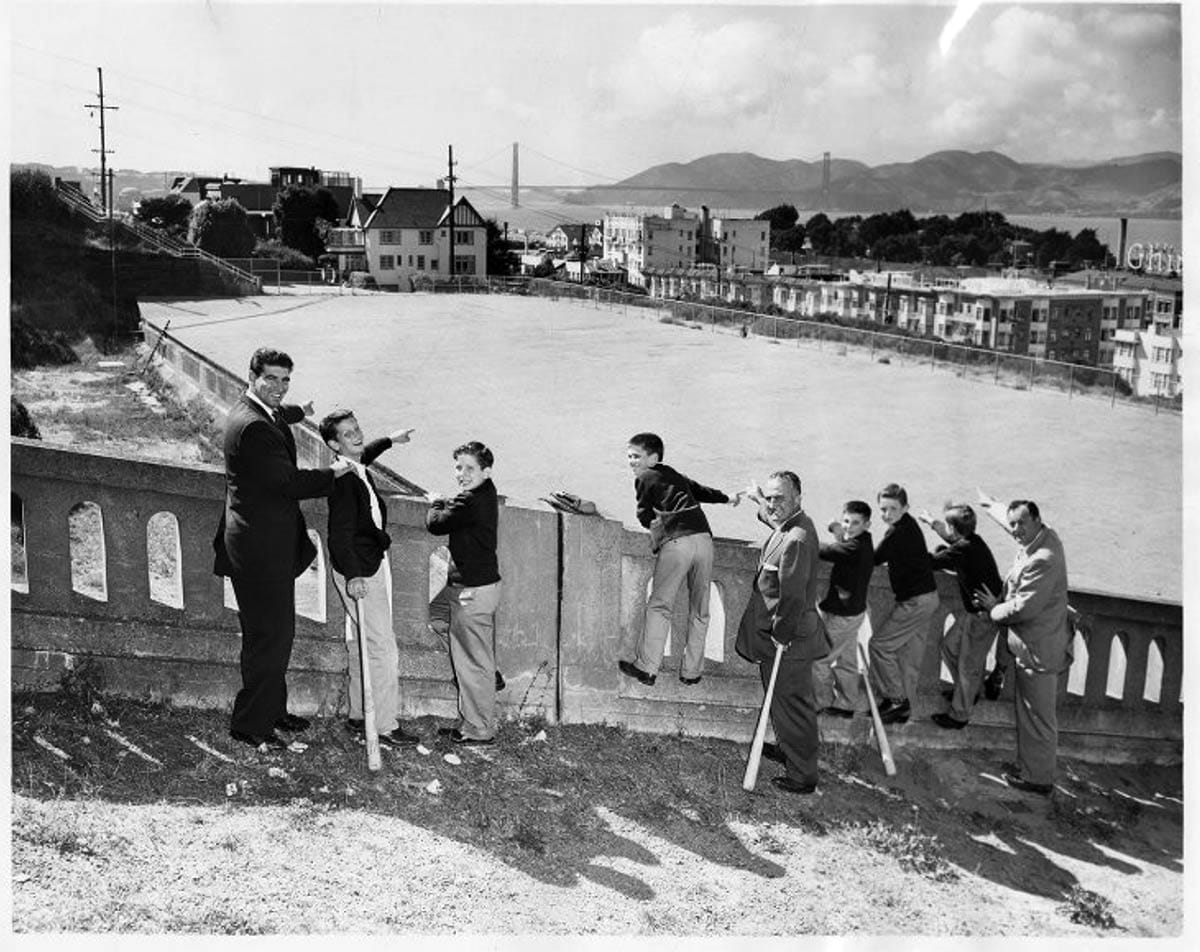
After multiple to-dos between the PUC, Rec and Park, the mayor, and neighbors, a compromise plan was put forward by the city: some of the site for a park-playground, some for an apartment tower or two, and maybe a big old water tank for emergency water?
The whole matter was sticky enough for the city that in the end nothing happened.
The reservoir stayed a reservoir with two little parky bits on each side and eventually the city just pulled the plug on water storage.
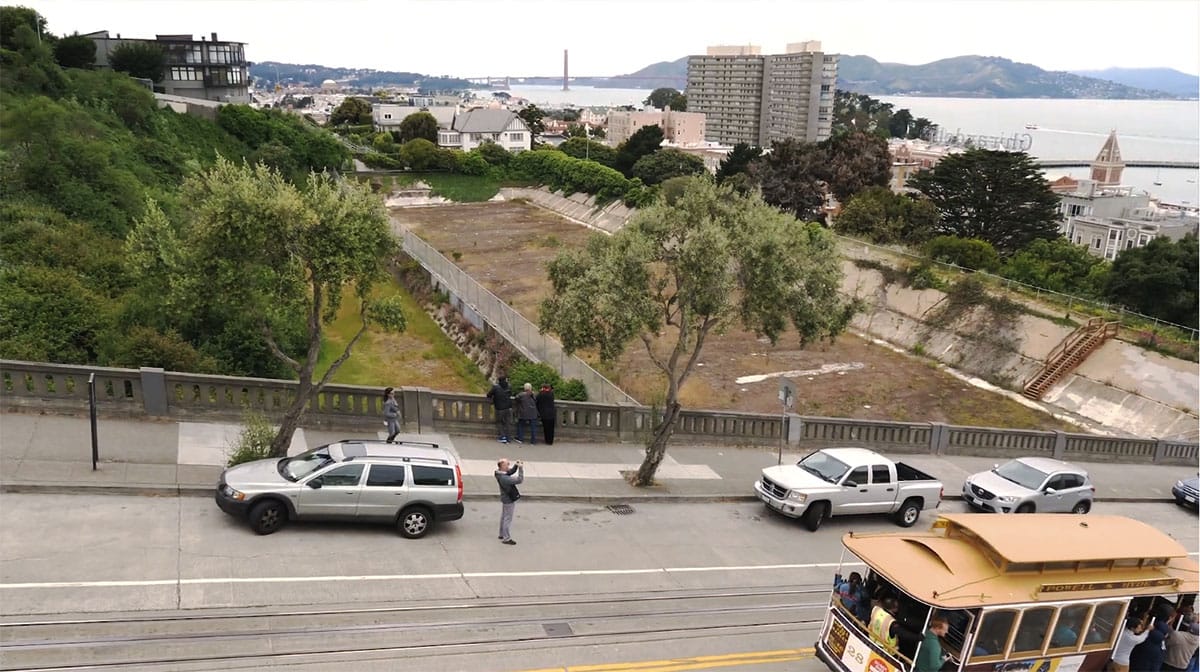
In 2006, as the Francisco Reservoir approached its 150th birthday, the PUC again decided to declare the land surplus and again began looking for a developer.
We have short memories, am I right?

Long story short, rather than hope a city agency would do the work, a nonprofit conservancy formed to make the park a reality. It steered the creation through agency transfers, public meetings, held off the build-baby-build zealots, and to have the park designed and built, raised more than $20 million in private money.
(That last part is pretty key to getting anything done in this town...)
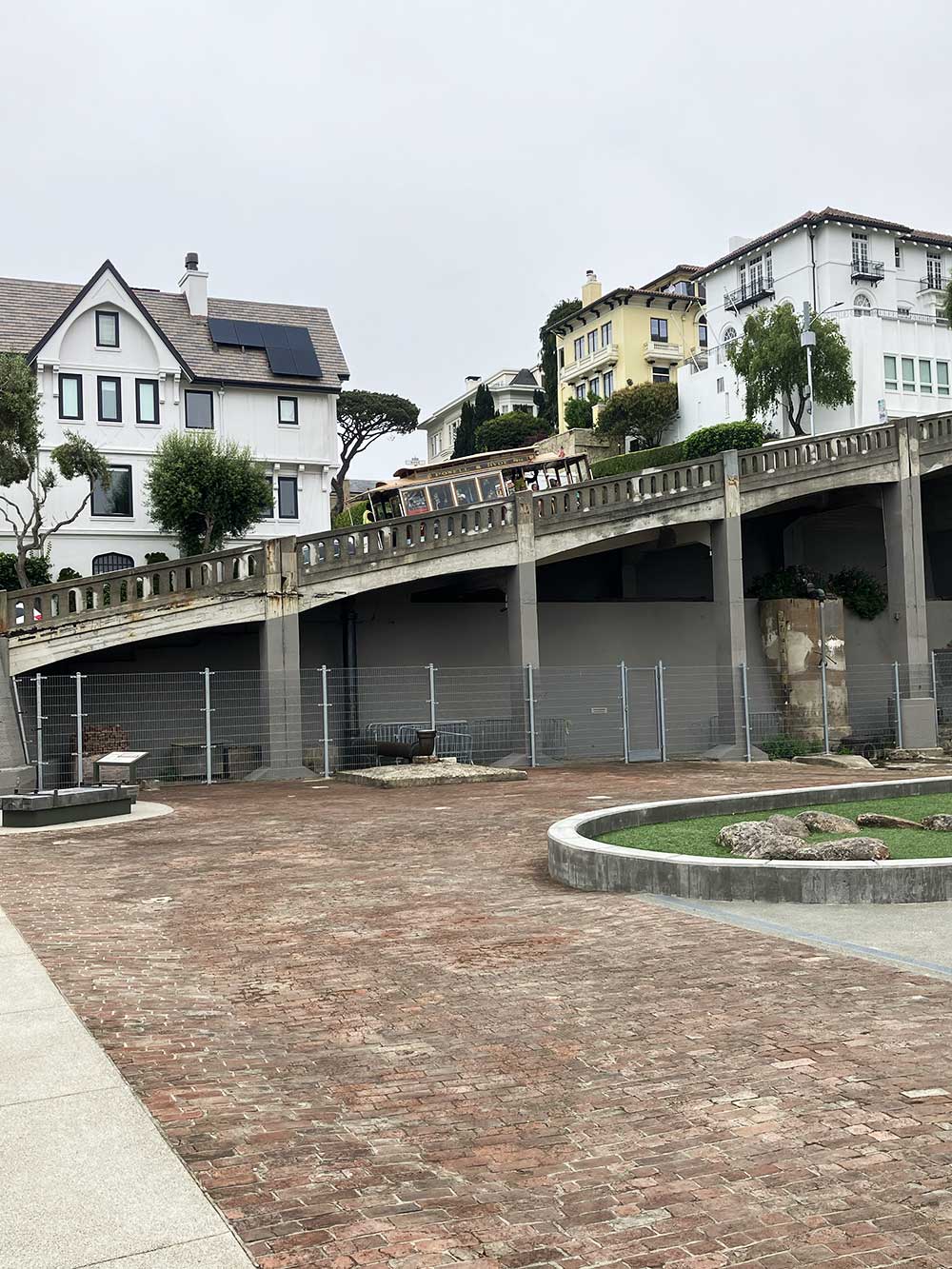
Work finished, the conservancy gifted its beautiful baby—which only took 75 years to gestate—to the Recreation and Parks Department on April 27, 2022.
There is no baseball field, but those kids in the 1958 photo are in their 70s today. They’re probably playing Pickleball.
Carville Show on June 23
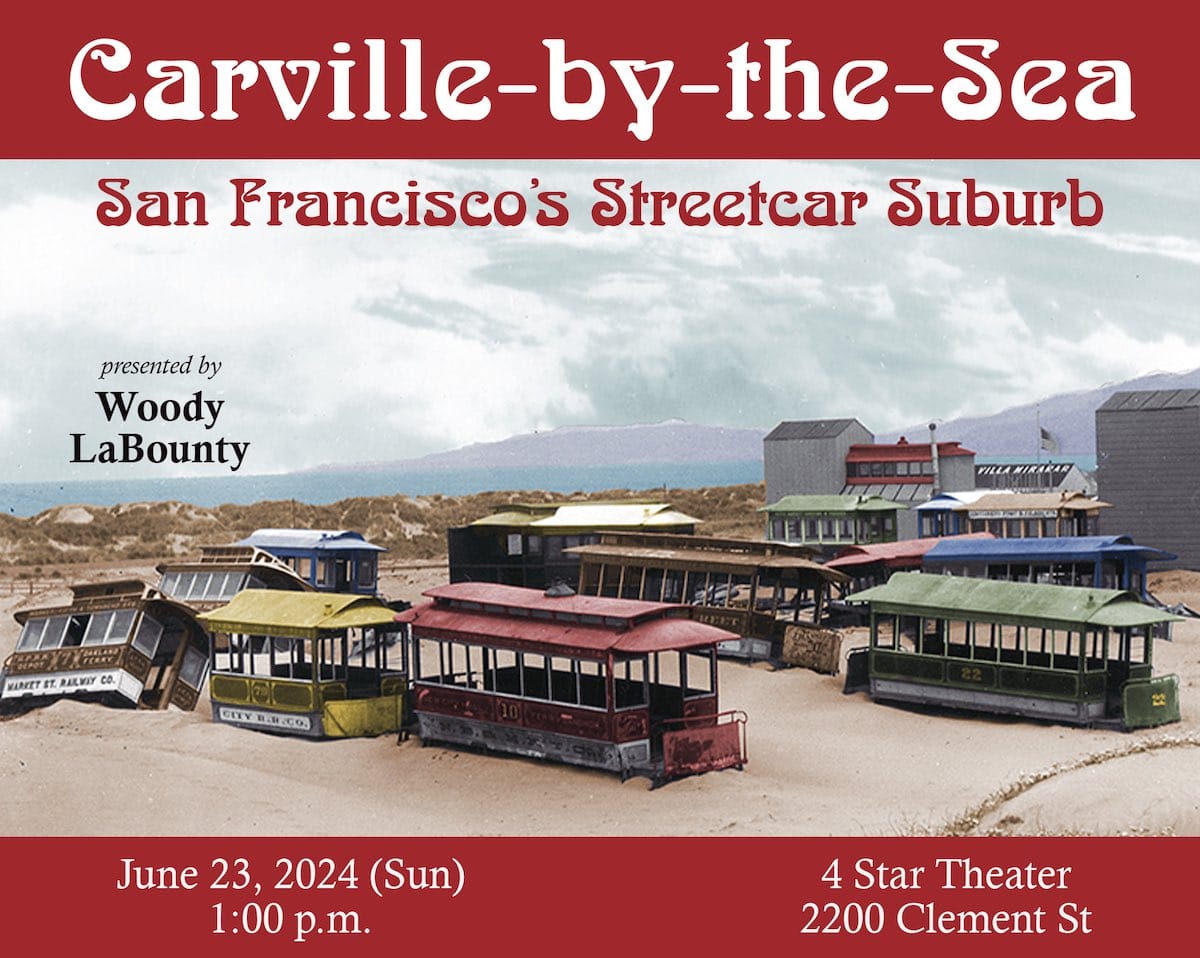
Carville! I will be back at the 4 Star Theater on Sunday afternoon, June 23, 2024, at 1:00 p.m., giving a presentation on one of my favorite San Francisco Stories. Get your ticket today.
Oh, and I am interviewing John King, Urban Design Critic for the San Francisco Chronicle, at the Inner Sunset District Green Apple Books (1231 9th Ave) on the evening of Wednesday, June 5, 2024. Come on by. (I think it will be streamed too?)
Woody Beer and Coffee Fund
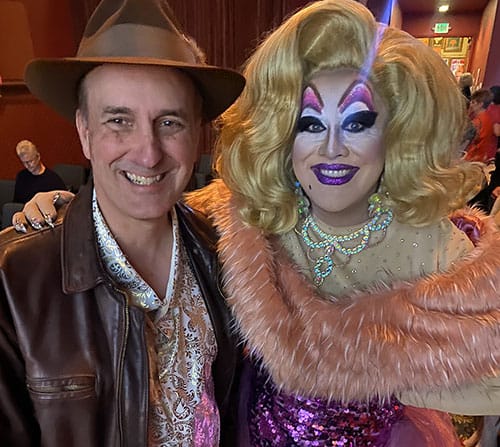
Thanks to Karen P. (F.O.W.), Richard R. (F.O.W.), and Brian S. (F.O.W.) for encouraging salubrious sociability with their contributions to the never-audited Woody Beer and Coffee Fund. Donations are fully taxed. Benefits are of a transcendent rather than tangible nature. But, hey, let me buy you a drink! When are you free?
Sources
John Martini, “Baker Beach’s Water Flume,” Outside Lands magazine, Volume 13, No. 4.
“Plea for Russian Hill Park Before Commission,” San Francisco Examiner, August 14, 1958, Section III, pg. 1.
Russ Cone, “Russian Hill Action Urged,” San Francisco Examiner, November 1, 1958, Section I, pg. 7.
“Compromise on Russ Hill Reservoir,” San Francisco Examiner, January 30, 1959, pg. 1.
Silas Valentino, “‘I’m in love with this place': San Francisco’s biggest public park in nearly 40 years opens on Russian Hill,” San Francisco Chronicle, May 2, 2022 (online edition)

